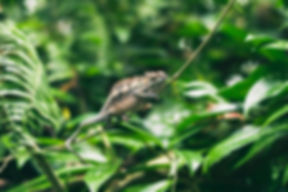
Research and Reports
Surveying Farmers to Evaluate Costs and Benefits of ARA Membership We continually evaluate our approach to better engage with farmers and resolve on-ground constraints. Read about the findings from one such evaluation: a survey of 20 farmers to assess the costs and benefits of being enrolled in the ARA.
Results of Our Small-Scale, Supplementary Feeding Test Here, we detail the results of one small-scale test we recently conducted—an investigation of how fishes’ growth and the water quality in farms may be affected by reducing supplemental feeding. This update is designed to inform our stakeholders of our approach to understanding the welfare of fishes better as well as to share our progress.
Fish Welfare Scoping Report: India Aquaculture is the fastest growing food production sector in the world, with roughly 73 to 180 billion farmed fish alive at any given point. Nevertheless, little concern has thus far been given to their welfare. Fish are often kept under poor environmental conditions and in high densities, fed for fast growth, and slaughtered via inhumane methods. These welfare issues are now becoming exacerbated and entrenched as production increases and intensifies. However, an increasing number of both academic and advocacy organizations, including Fish Welfare Initiative, are now recognizing that welfare is a guiding principle for responsible aquaculture. This report discusses the welfare of farmed fish in India, a country with an estimated 3 to 14 billion finfish alive in aquaculture, the second largest quantity of cultured finfish per country in the world. To better understand Indian aquaculture, we first reviewed FAO data, industry data, and other studies relevant to fish welfare. Secondly, we visited and surveyed 17 farms in India in March and July of 2020. Our main findings are the following: In India, farmed finfish are largely consumed domestically: only 26% of aquaculture exports are finfish. Domestically consumed fish are often sold in informal markets with little to no government regulations. Although there is increasing centralization of the seafood market, top-down changes still appear challenging. The primary aquaculture systems in India are extensive and semi-intensive freshwater ponds. In 2018, 86% of fish producers operated freshwater systems. More intensive farming systems, such as Recirculatory Aquaculture Systems (RAS) and raceways, are becoming increasingly popular. In 2018, Indian Major Carp accounted for 73% of finfish production, and catfish for 10%. The proportion of certified aquaculture facilities in India is still very low, although the Global Aquaculture Alliance Best Aquaculture Practices (BAP), the Aquaculture Stewardship Council (ASC), and Friend of the Sea (FoS) certification schemes are all either already active in India or have indicated interest in being so. The vast majority of facilities certified by BAP and ASC farm or process shrimp. In our field visits and farm surveys (n=17), the production issues reported by the largest number of farmers were water quality, diseases and infections, and lack of qualified veterinary care or appropriate medicines. The majority of farmers surveyed expressed an interest in future NGO collaboration. Pre-slaughter stunning was absent in every facility we visited. We conclude with a list of recommendations for future fish welfare work in India. Specifically, we suggest that organizations demonstrate the connection between fish welfare and other issues and include a focus on enforcement, amongst other recommendations. For specific welfare guidelines and on-the-farm recommendations for Indian Major Carp, see our upcoming Fish Welfare Improvements in Aquaculture report. We encourage any organization or industry interested in engaging with fish welfare in India to contact us. We are available to provide consultation, training in fish welfare improvements, and access to funding. Lastly, we would like to thank the numerous people in India who made this report possible.
Fish Welfare Improvements in Aquaculture Fish welfare is a topic gaining global recognition. While fish are at the center of this, the value of improving fish welfare extends far beyond the fish themselves. Fish welfare benefits the environment, strengthens rural livelihoods, and advances social well-being. As such, increasing fish welfare in aquaculture is a critical part of building a less damaging food system.